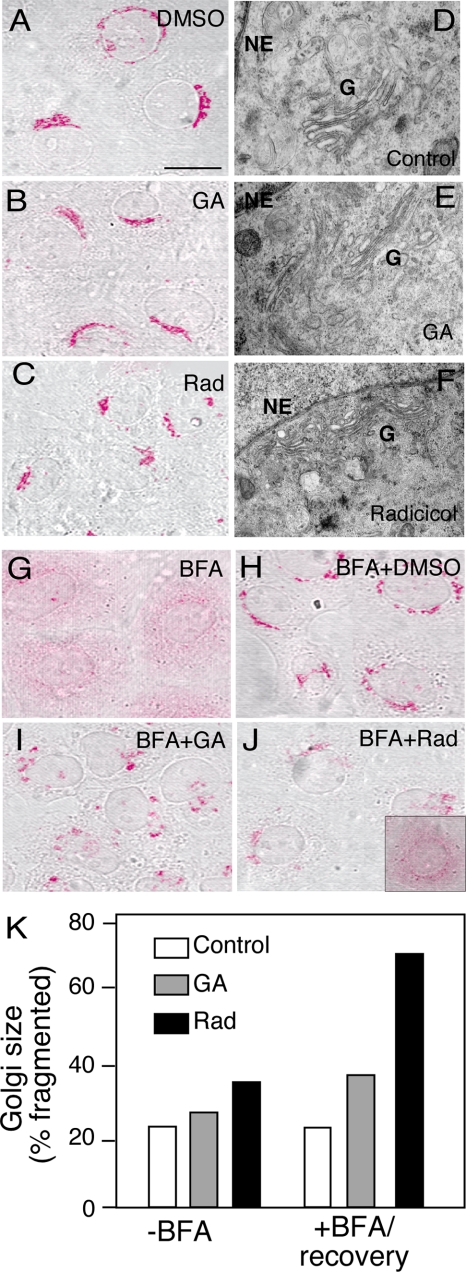Figure 7.
GA and radicicol prevent the recovery of Golgi compartments after treatment with BFA. (A) NRK cells were treated with vehicle (0.1% DMSO) control (A and D), 20 μM GA (B and E), or 50 μM radicicol (Rad) (C and F) at 37°C for 2 h before preparation for indirect immunofluorescence using the Golgi specific antibody Man II (A–C) or electron microscopy (D–F) (NE, nuclear envelope; G, Golgi). (G–K) Cells were treated with 2.5 μg/ml BFA for 1.5 h in the absence (G) or presence of DMSO (H), 20 μM GA (I), or 50 μM radicicol (J) and either transferred to ice (G) or incubated for an additional 30 min in the absence of BFA, but in the presence of the indicated Hsp90 inhibitor. Inset in J illustrates that Rad does not prevent BFA-induced collapse of the Golgi into the ER. In K, the percentage of residual fragmented Golgi relative to the control incubation was determined by the ratioing the area of the punctate Golgi staining regions that occupied <5 μm2 (indicative of fragmented structures) to the total Golgi area labeled by Man II (20 cells for each condition were quantitated using NIH ImageJ software).

